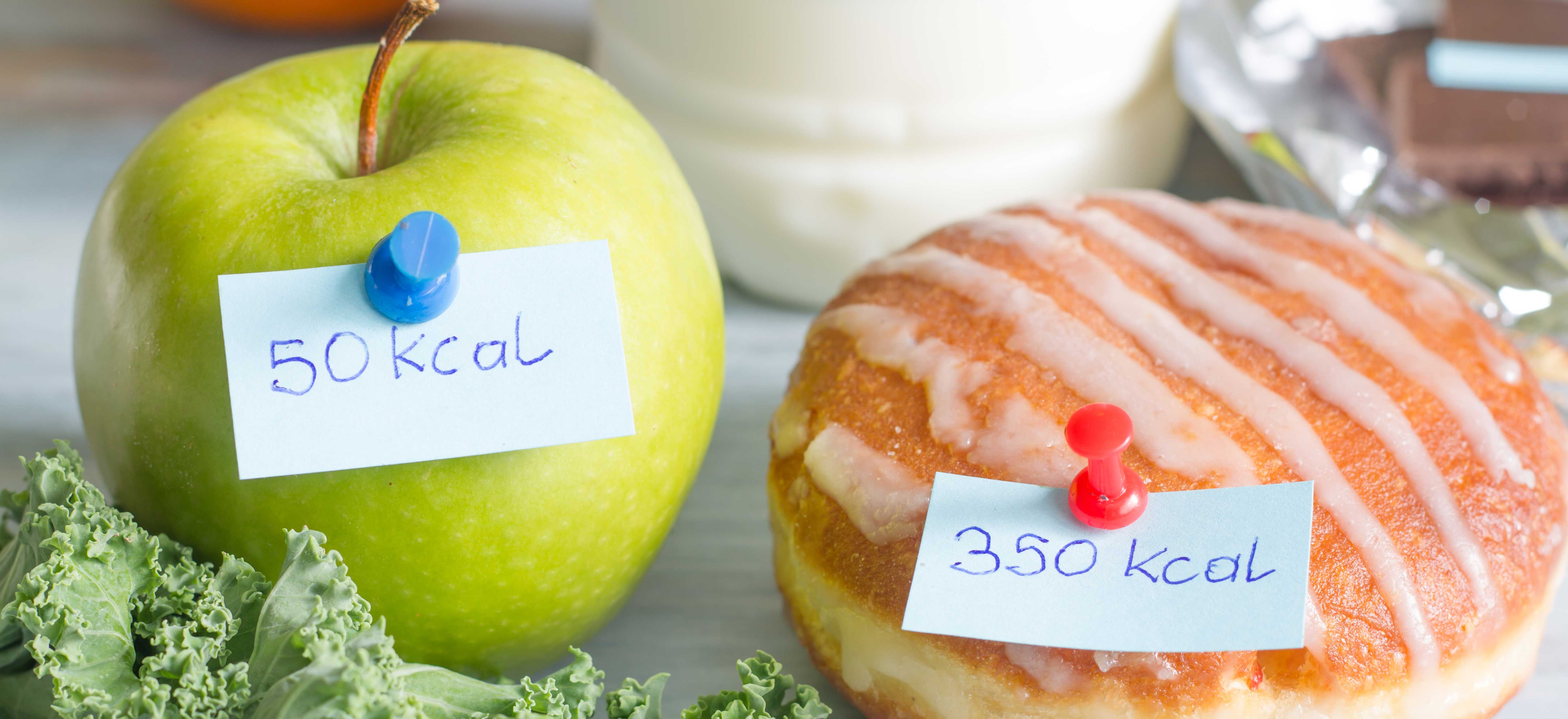WHAT IS A CALORIE AND HOW MANY DO YOU NEED?
Posted: 21/12/2020 by Steven Lokwan Ph.D.

We may often think about calories, especially when striving to follow a healthy balanced diet or when seeking to change our body composition. How many calories are in that piece of cake you long for? How many did you burn in that workout you’ve just finished? However, what really is a calorie, and how many do we really need?
Calories are a unit of measure that allows us to keep track of the energy requirement for the lives we wish to lead. In order to maintain good health, a delicate balance between the calories we consume and the calories we burn must be achieved. If we consistently consume more calories than we use, the excess is stored as body fat, which if for the odd occasional day is not a problem but if prolonged, we gain weight; conversely, if we burn more energy than we replenish we lose weight. Therefore, the calorie unit provides us with a useful way to measure the energy we consume and use.
One Calorie is defined as the amount of energy it takes to raise the temperature of 1kg of water by 1 degree Celsius. With the exception of plain water, all of the food and drink that we consume has a calorie count, namely a measure of how much energy is stored in their chemical bonds. An average slice of pepperoni pizza has 298 Calories, a bagel 289 Calories and a banana around 105 Calories.
To ease calculations, the energy yield is expressed in 1000-calorie units known as kilocalories. This means 1 Calorie (Cal) is equivalent to 1 kilocalorie (kcal), and as such can be used interchangeably, in other words 10Cal, 10cal and 10kcal mean the same thing.
CALORIE REQUIREMENTS
The energy that is released from the food that you eat can be used in 3 ways. About 10% is used for digestion itself, a further 20% fuels activities of daily living, and the largest proportion, around 70%, supports the basic functions of life (e.g. keeping our heart beating and breathing), namely your basal metabolic rate.
The general consensus is that women require 2,000 Calories (8,400kj) per day and men 2,500 Calories (10,5000kj) per day. These recommendations are based on average values for age, build, physical activity levels, and body composition. So, does this mean you should aim for these calorific intakes? Not necessarily, if you are particularly active, for example, if you regularly participate in HIIT workouts, you will require more calories than these guidelines recommend (as high as 3,200kcal or more). Conversely, if your lifestyle is predominantly sedentary you will probably require less than what these guidelines suggest (as low as 1,600kcal). Additionally, pregnant individuals require slightly more calories, whilst elderly individuals typically have slower metabolic rates meaning that they burn energy more gradually so fewer calories are required.
The calorific value of the three main macronutrients varies. Both protein and carbohydrate yield 4kcal per gram whereas fat yields 9kcal per gram. This means weight for weight, foods that are high in fat provide over double the number of calories than food that are predominantly protein and carbohydrate, and therefore consumption needs to be adjusted accordingly to ensure calorie balance is maintained.
Nutrient-dense foods, such as fresh fruit and vegetables that have a high nutrient and fiber content, require more energy to digest than highly processed, energy-dense (empty calorie) food. This means if you consumed a 100kcal serving of a nutrient-dense food such as bran, you would end up yielding less energy than if you consumed a 100kcal serving of an energy-dense, empty-calorie food such as potato chips.
| NUTRIENT-DENSE FOODS | ENERGY-DENSE (EMPTY-CALORIE) FOODS |
|
|
Furthermore, even if the same food is consumed in exactly the same proportions, the same number of calories may still not be obtained between different individuals. Physiological and anatomical variations such as enzyme levels, gut bacteria, and intestinal length all influence the amount of energy that can be derived from the ingestion of food, which means it will be a little different for every one of us.
CALORIES & FOOD LABELLING
The calorie content of packaged foods is stated on the nutrition label under the heading ‘Energy’, and these days even some restaurant menus provide this information too. The calorie content is usually given in kcals, and also in kJ, which is short for kilojoules (the metric equivalent to kcal) for 100g or 100ml of food or drink respectively for easy comparison between different types of food. Additionally, some labels may also provide the number of calories in one portion size, though it's worth remembering that the manufacturer's idea portion size may not match yours, so there could be more calories in the portion you serve yourself.
Whilst you may think simply totting up the calories stated on food labels will give an accurate count of your intake, there are some provisos with this approach. The calorie count stated on nutrition labels is a measure of the energy yield if burnt under ideal laboratory conditions, not in your body. In other words, they do not tell you how much energy you can actually get out of it owing to the individual physiological variants we previously discussed. Therefore, the stated calorific values on food packaging and menus should be considered as guidelines only.
FINAL THOUGHTS
A calorie is a useful measure of energy intake. Calorie overconsumption results in weight gain because the excess fuel that is consumed is stored as body fat, whereas under consumption of calories results in weight loss; initially, fat loss but if prolonged muscle loss can occur too. The recommended daily calorific intake is 2,000 Calories and 2,500 Calories for women and men respectively, though your exact requirements depend on lifestyle choices, including activity levels, and physiological determinants such as your gut microbiota.




